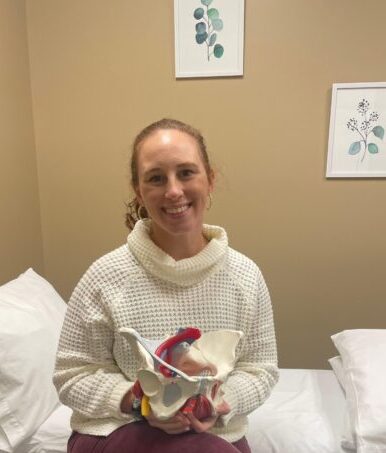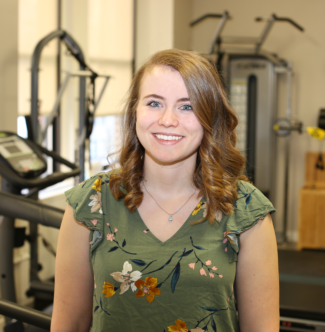
Dr. Gaby Moawad
Dr. Gaby Moawad, MD.
Dr Gaby Moawad Md – Endometriosis Specialist, Gynecologist, Minimally Invasive Gynecologic Surgeon
Summary: Dr Gaby Moawad MD is a renowned endometriosis specialist and minimally invasive gynecologic surgeon based in McLean, VA. With a research-driven approach, Dr Gaby Moawad blends advanced surgical expertise with a deep understanding of genetic and epigenetic factors influencing endometriosis. Patients searching for expert care from Gaby Moawad MD will benefit from his commitment to holistic, personalized treatment that goes beyond surgery.
Gaby Moawad offers comprehensive management for chronic pelvic pain, combining surgical precision with hormonal therapy, pain desensitization, pelvic floor therapy, and integrative care like acupuncture and nutrition. Dr Gaby Moawad ensures each patient receives thoughtful, long-term support tailored to their fertility goals and symptom profile. His dedication to evidence-based care and whole-person healing makes him a trusted choice for those seeking lasting relief from endometriosis.
City: Mclean, VA, USA
Philosophy: Endometriosis has been considered for a century as implants of endometrial-like tissue outside the uterus either following retrograde menstruation into the peritoneal cavity or following hematological dissemination. This implantation theory is attractive as endometriosis looks histologically like the endometrium, as retrograde menstruation contains living cells that can implant, and as the fibroblasts from endometriosis or from the endometrium of women with endometriosis have an increased invasion capacity.
The implantation theory does not explain why endometriosis lesions develop in some women only, while retrograde menstruation seems to occur in most women. Some observations are difficult to explain by the implantation of endometrial cells following retrograde menstruation. The clonality of each endometriosis lesion, as described for deep and cystic and typical endometriosis, is more consistent with a G-E (genetic-epigenetic) incident related to intracellular aromatase activity resulting in intracellular estrogen production than to newly implanted endometrium. The implantation theory does not explain the occurrence of endometriosis in women without a uterus, and in men. It is more likely that deep endometriosis lesions can become symptomatic more than 10 years after menopause in the absence of increased circulating estrogen as a result of a G-E cellular incident than that implanted endometrium would suddenly start to develop. It should be realized that theories such as coelomic metaplasia, endometriosis originating from bone marrow/stem cells, Müllerian rests, tissue injury and repair, repeated tissue injury and repair, estrogen toxicity and traumatic induction are compatible with and can be considered today to require epigenetic changes.
Recently, the G-E theory of endometriosis was formulated as an update of the endometriotic disease theory. Endometriosis starts in the G-E theory, irrespective of the original cell when a cumulative combination of specific genetic and/or epigenetic cellular incidents exceeds a certain threshold. The inherited genetic and epigenetic incidents at birth explain the hereditary character of endometriosis. It remains unclear whether and how epigenetic changes are transmitted transgenerationally in endometriosis. The effects of minor G-E abnormalities remain clinically invisible because of the redundancy of molecular biological mechanisms in the cell, but they increase the risk of developing the disease when additional incidents occur. Additional incidents can occur during intra-uterine development because of the maternal environment and external factors, and during live mainly as mistakes during mitosis. Most G-E mistakes result in apoptosis of the cell if they cannot be repaired. Some minor incidents, however, do not cause cell death and are transmitted to the next generation of cells. These incidents are favored by mutagenic substances such as dioxins and other pollutants, radiation, or oxidative stress such as caused by retrograde menstruation or by infection or by the peritoneal microbiome. The dynamic and gradual aspect of these mistakes and their inheritance is important. The crosstalk between genetic and epigenetic mechanisms makes the cell vulnerable to new incidents, especially when the external circumstances are unfavorable. The cell thus becomes progressively more vulnerable to acquiring more mistakes, with some of them being cancer-associated mutations explaining the clonal expansion.
The G-E theory adds to the implantation and other theories that the onset of the disease requires a cumulative and triggering combination of G-E cellular incidents. With the G-E hypothesis, it seems logical to postulate that the specific set of G-E incidents will orient the development into clinically subtle, typical, cystic or deep lesions. A specific set of G-E incidents also explains that each type of lesion is heterogenous with variable aromatase activity, progesterone resistance, estrogen sensitivity and probably many other factors. Additional incidents occurring during further development result in endometriosis lesions which are probably also heterogeneous at the cellular level, as demonstrated for breast cancer.
After their triggered initiation, the lesions develop in an environment different from the uterus with different microbiota and different immunologic, endocrine and paracrine influences. The cyclic endocrine changes with eventual bleeding will moreover result in repetitive traumas which increase the risk of developing additional G-E incidents and ultimately fibrosis. Therefore, all theories emphasising trauma, immunology, the role of estrogen and peritoneal fluid retain their full importance for understanding the growth of endometriotic lesions.
Much of the many endometriosis-associated changes, such as changes in the endometrium and in the immunology can be viewed as a consequence of the inherited predisposition instead of being a consequence of endometriosis.
Although poorly understood, reversibility of epigenetic changes becomes more difficult when additional epigenetic incidents have occurred. When the associated genomic instability results in genetic errors, changes become irreversible.
Medication: OCP, Progestins including IUD, gabapentin, Lyrica.
OCP, Progestins are mainly used for suppression after excision
Gabapentin, Lyrica is used for central pain desensitization in preparation to or after surgical management especially for patients with chronic pelvic pain and amplified pain response
Approach to Persistent Pain After Surgery: Endometriosis excision surgery is only one part of the comprehensive approach to the management of endometriosis. Pain medicine has an important role in managing central pain and neuropathic pain, pelvic floor PT helps with myofascial pain associated with endometriosis, other ancillary services like nutrition and pain psychology, acupuncture has proven an added value in the management of endometriosis-associated conditions

Carly Feltz, PT, DPT
Visit types: Office/Hospital
Spoken languages: English
Interpreting services for other languages: Yes
Philosophy of care and typical treatment strategies:
I take time to get to know my patients to bring compassion to their care. I will individualize care for each patient based on their symptoms, history and experiences. Treatment strategies that I may use include myofascial release, visceral manipulation, neuromuscular re-education, muscular relaxation, behavioral modification, and stress relaxation training. I am passionate about helping those with endometriosis find high quality care, and I will help build your team of providers to reach your goals.

Dr. Rachael Haverland
Rachael Haverland, M.D.
Dr Rachael Haverland – Endometriosis Specialist, Gynecologist, Minimally Invasive Gynecologic Surgeon
Summary: Dr Rachael Haverland is a gynecologist and endometriosis specialist in Dallas, TX, known for her thoughtful, holistic approach to care. As a minimally invasive gynecologic surgeon, Dr Haverland focuses on complete excision surgery—the gold standard for endometriosis treatment—and supports recovery through a multidisciplinary care plan. Many Dr Rachael Haverland reviews highlight her dedication to addressing the full picture of pelvic pain, including related conditions like IBS and interstitial cystitis.
With a strong belief that every patient’s journey is unique, Dr. Haverland avoids one-size-fits-all treatments and limits the use of medications with harsh side effects. Instead, she often combines non-opioid pain management, pelvic floor physical therapy, and collaborative care with other specialists. Patients value how Dr. Rachael Haverland takes the time to uncover the root causes of pain and stay involved throughout the healing process—an approach that consistently earns praise in Dr. Rachael Haverland reviews.
City: Dallas, TX, USA
Philosophy: The etiology of endometriosis is complex. I do not agree with retrograde menstruation as I have seen premenstrual as well as postmenopausal patients with endometriosis. This also leads to the idea if you stop menstruation, you stop the pain which is not always the case. While more research on endometriosis needs to be done, I do believe the endometriotic implants are likely genetically present consistent with the Mullerianosis theory. They may additionally spread by lymphatic or blood systems ( how we get cardiac and pulmonary endometriosis). Endometriosis for gold standard treatment must be excised completely. Once appropriate excision surgery has been completed, a dynamic team approach with pelvic floor PT, injections by physiatrists and frequent postoperative visits to ensure no other additional diagnosis was missed is important. Frequently IBS, IC, or other chronic conditions are found in patients with endometriosis.
Medication: Endometriosis treatment is multifaceted and must start with a holistic approach to not only management of the endometriosis but also the other disease processes. I reserve/restrict the use medications such as Lupron, Orlissa, or other GnRH agonists or antagonists due to significant physical and mental side effects. Medications can be used to help symptoms if a patient does not desire excision surgery and options such as progesterone IUD or birth control pills are offered if desiring contraception. I also discuss after surgery, the first 2-3 cycles may be irregular and or more painful due to acute inflammation. Frequently, I use other non-opioid mediations such as NSAIDs, duloxetine, gabapentin, other SNRIs and compounded medications in adjunct depending on the patient’s pain generators.
Approach to Persistent Pain After Surgery: Multidisciplinary approach is the key to success! After patients have been in prolonged pain, the central sensitization of pain cycle can be important to address. Using compounded vaginal suppositories, pelvic floor PT, pelvic floor Botox and also targeted nerve injection series with physiatrist can be beneficial to address pain after surgery. If persistent pain continues, my approach is individualized. First, I closely evaluate each organ system to ensure we are addressing each area in a holistic approach at the initial visit to identify potential coexisting pain generators. At the initial consultation visit I also identify other compounding potential etiologies of pain. Sometimes a second look is necessary or discussion of other forms of hormonal suppression. I always follow my patients until their symptoms are improved.

Randi Curtis, PT, DPT
Visit types: Office/Hospital
Spoken languages: English
Interpreting services for other languages: Yes
Philosophy of care and typical treatment strategies:
I enjoy working with patients who have been diagnosed with Endo while having a strong working relationship with their medical team (gynecologist, endo-specialist, etc.). I provide intravaginal and intrarectal Manual Therapy to best access the Pelvic Floor Muscles in addition to external manual therapy techniques including Soft-Tissue Massage as a holistic approach to best serve the patient. I enjoy incorporating breathing techniques and yoga-like movements into my patients’ plans of care as I have seen the amount of benefit it has on down-regulating the nervous system response to pain and central sensitization as most of my patients have been dealing with their pain for years.

Alexandra Burtman, PT, DPT
Visit types: Office/Hospital, Virtual
Spoken languages: English
Interpreting services for other languages: Yes
Philosophy of care and typical treatment strategies:
At Solstice Physiotherapy, we specialize in pelvic health. Our goals are to restore function and eliminate pain so that patients can improve their daily functionality. We treat a complex part of the body by integrating our knowledge of orthopedics, bladder, bowel and sexual function to fully understand the entire person. Using an interdisciplinary approach, we focus on communicating with other specialists and providers to create an appropriate treatment plan and provide the best care to our patients. We practice myofascial release, strengthening associated muscle weakness and providing evidence based intervention. We also perform yoga, pilates, and sports specific intervention. We are committed to helping patients decrease symptoms and live the life they want pain-free. We believe in empowering our patients and advocating for them.

Dr. Maria Victoria Vargas
Dr. Maria Vargas, M.D.
Victoria Vargas – Gynecologist, Minimally Invasive Gynecologic Surgeon
Summary: Victoria Vargas MD, also known as Dr. Vargas OBGYN, is a skilled gynecologist and minimally invasive gynecologic surgeon based in Washington, D.C. Specializing in endometriosis, Dr. Maria Vargas combines a deep understanding of the disease’s complex nature with a patient-centered approach to care. She emphasizes the multifactorial origins of endometriosis, incorporating the latest research, including the Mulleriosis theory, to offer individualized treatment options.
Dr. Vargas provides comprehensive care, including hormonal therapies like combined oral contraception and the levonorgestrel-releasing IUD, tailored to each patient’s needs. She also focuses on managing persistent pain post-surgery, offering non-narcotic solutions such as nerve blocks, acupuncture, and pelvic floor physical therapy. Whether through lifestyle recommendations or advanced surgical techniques, Dr. Vargas helps her patients improve their quality of life with personalized, holistic care.
City: Washington DC, USA
Philosophy: Endometriosis is a complex disease and its etiology appears to be multifactorial. Currently, Mulleriosis seems to be the most accepted theory of origin. Unfortunately, we still lack understanding about the full spectrum of the disease, which includes a self-sustaining, highly inflammatory environment with the capacity to promote its own nerve and blood supply. There seems to be a hereditary component, and increasingly, we are defining somatic mutations common to endometriosis lesions. Given the many unknowns regarding endometriosis, I focus my practice on ensuring patients understand the complexity of the disease and try to develop an individualized approach based on each patient’s preferences and circumstances.
Medication: Depending on my patient’s preferences and needs, I offer hormonal suppressive therapy, including combined oral contraception, oral progestin medication, and the levonorgestrel-releasing IUD. I typically recommend extended-cycle dosing or continuous dosing of oral medications to achieve amenorrhea. In some cases, when patients don’t have sufficient improvement with hormonal suppression or when they don’t tolerate or are opposed to hormonal suppression, I may also recommend NSAIDs, gabapentin, or SNRIs.
Approach to Persistent Pain After Surgery: I bring up the possibility of residual pain before the surgery takes place so patients understand that there may be ongoing treatment beyond the recovery from surgery. I follow patients closely after surgery to ensure that they are able to achieve a maximal improvement in quality of life. If residual pain is present, I consider the possibility of co-morbidities, such as pelvic floor dysfunction and painful bladder syndrome. When appropriate I refer to my colleagues in pelvic floor physical therapy, pain management, and urology. I do promote a focus on non-narcotic options for residual pain, such as nerve blocks, trigger point injections, acupuncture, and TENS therapy. I also encourage mindfulness and meditative practices. I utilize hormonal suppressive therapy when appropriate as well. Rarely, I discuss second-look surgery as an option. I find that the vast majority of my patients achieve a positive outcome with this approach.

Erica Michitsch, PT, DPT
Visit types: Office/Hospital
Spoken languages: English
Interpreting services for other languages: Yes
Philosophy of care and typical treatment strategies:
Myself and at Solstice Physiotherapy, I specialize in pelvic health and orthopedics. My goal is to restore function and eliminate pain so that my patients can improve their daily functionality. We treat a complex part of the body and I do this by integrating my knowledge of orthopedics, bladder, bowel and sexual function and myofascial mobility to fully understand the entire person. The experience I have gained over the years treating pelvic helped has allowed me to use empathy and detail when treated my patients. I am an avid yogi and a pilates instructor as well as a collegiate athlete and use these skills when performing movement with patients. I use an interdisciplinary approach to focus on communicating with other specialists and providers in order to create an appropriate treatment plan and provide the best care to our patients. I am committed to helping patients decrease symptoms and live the life they want pain-free. We believe in empowering our patients and advocating for them.

Lisa Whisenant, OTR
Visit types: Office/Hospital/Virtual/Home
Spoken languages: English
Interpreting services for other languages: No
Philosophy of care and typical treatment strategies:
I treat holistically, looking at the full body. Diaphragmatic breathing education and techniques, proper core and pelvic floor contract/relax, lengthening abdominals, functional positioning and mobility, bowel, bladder, and sexual habits and routines, visceral mobilization, myofascial release, cupping, dry needling, adaptive equipment/modalities such as squatty potty, dilators/wands, vibration.

Kara Mortifoglio, PT, DPT
Visit types: Office/Hospital
Spoken languages: English
Interpreting services for other languages: No
Philosophy of care and typical treatment strategies:
I like to use a hollistic approach, including: bladder/bowel techniques and retraining, visceral mobilization, myofascial release, biofeedback, dilator training, internal manual manipulation, anorectal manometry balloons, therapeutic exercise, pilates, postural re-education. Along with this, I often work in conjunction with pelvic pain specialists, acupuncturists, talk therapists, and many other practitioners.

Kelly Resha, PT, DPT
Visit types: Office/Hospital
Spoken languages: English, some Spanish (not fluent)
Interpreting services for other languages: No
Philosophy of care and typical treatment strategies:
I believe that every woman needs to be heard when it comes to their pelvic pain. I am trained in a hands on approach of visceral mobilization, internal pelvic floor therapy, myofascial decompression (cupping), and treatment of the “other pieces of the puzzle” including the hip/lumbar spine, and abdominal wall.

Claire Hamnett, PT, DPT
Claire Hamnett, PT, DPT
Visit types: Office/Hospital/Virtual
Spoken languages: English
Interpreting services for other languages: No
Philosophy of care and typical treatment strategies:
At Solstice Physiotherapy, we specialize in pelvic health. Our goals are to restore function and eliminate pain so that patients can improve their daily functionality. We treat a complex part of the body by integrating our knowledge of orthopedics, bladder, bowel and sexual function to fully understand the entire person. Using an interdisciplinary approach, we focus on communicating with other specialists and providers to create an appropriate treatment plan and provide the best care to our patients. We practice myofascial release, strengthening associated muscle weakness and providing evidence based intervention. We also perform yoga, pilates, and sports specific intervention. We are committed to helping patients decrease symptoms and live the life they want pain-free. We believe in empowering our patients and advocating for them.

Niva Herzig, PT, DPT
Visit types: Office/Hospital/Virtual
Spoken languages: English, Hebrew
Interpreting services for other languages: No
Philosophy of care and typical treatment strategies:
My approach is patient 1st: I provide space and time to hear the story, guidance, and resources when needed. My background, in addition to PT includes health coaching and sexual counseling (in the process). PT approach using manual therapy (myofascial, visceral mobilization, soft tissue, cupping, etc.), neuromuscular re-Ed: pain science (graded exposure, guided imagery, etc.)., exercise and movement.

